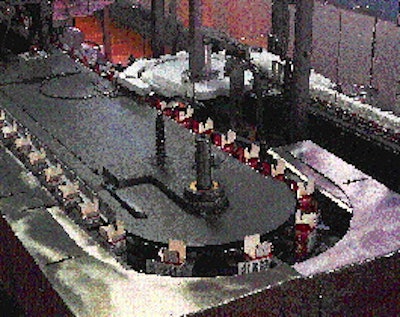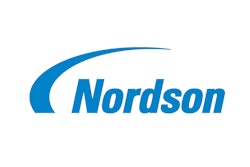
Technically, the existing packages for Chattem's Pamprin® line of menstrual pain relief products met the Child Product Safety Commission's (CPSC) regulations, says Arnold Godwin, director of packaging operations. But legal uncertainties prompted this manufacturer of pharmaceutical and personal care products to switch to more definitive child-resistant packaging. "While we met the letter of the law," explains Godwin, "we didn't meet the intent of the law." Available in caplets and tablets, both Maximum Pain Relief and Multi-symptom formulas of Pamprin came in two sizes of bottles and three sizes of foil-based pouches. CPSC's main concern was with the Chattanooga, TN-based manufacturer's pouched version. "They said 'You're legal, but we don't think you should be in pouches,'" he continues. To comply with CPSC's regulations, Chattem began to redesign the packaging of its Pamprin line of products, and took the initiative to modify packaging for Pamprin's sister line, Premsyn PMS®, into bottles with CR closures. Changes, which were initiated in January, 1995, included nine SKUs of product, as well as a revamp of Chattem's existing packaging line. First, all pouch-style packages would be eliminated. An obvious change was to replace snap-on caps with CR caps. For secondary cartons, switching from tucked end flaps to glued end flaps would reduce the potential for pilferage. Adding a fifth panel to the cartons would facilitate pegging and provide additional space for updated graphics, alerting consumers to the new packaging. To replace the pouches, which are being phased out, the number of high-density polyethylene bottles were increased, with new 25-, 30-, and 50-cc sizes, holding counts from 10 to 40. Chattem added an induction-seal to the polypropylene screw-on CR closure. Eager to get the product to retailers, Chattem anticipated a Spring rollout. But changes to the packaging line were a bit more involved-and were complicated by Chattem's nearing deadline. Although the pouch phaseout allowed the company to consolidate its operations from two semi-automatic lines into a single, higher-speed, automatic line, bringing the line up to speed would take some time. Chattem had already purchased a new unscrambler, filler, cottoner and capper for the new line. Issues that remained, says project engineer Liz Hobbs, were that the product would still be manually inserted into cartons, and that the cartoner speed needed to be increased by 30% to meet anticipated increases in volume. "Our deadline would have been very difficult to meet if we had ordered a new cartoner," says Godwin. An alternative sat in Chattem's warehouse: a CMV 5 cartoner from R.A. Jones (Cincinnati, OH) acquired earlier. Unfortunately, the cartoner had been customized for that particular line. After weighing its options, Chattem turned to machinery rebuilder Cartpac (Elmhurst, IL) for help. The cartoner was sent to Cartpac's facility, where it was disassembled and evaluated. "They reconfigured everything back to the way Jones had sold it," says Hobbs. This included replacing all worn parts, including cam followers, bearings and rod ends, as well as restoring the electrical system back to its original configuration. To convert to glued end flaps, Cartpac installed a hot melt glue applicator from Nordson (Duluth, GA). To replace the previously debossed lot code and add expiration dates, Cartpac installed a Videojet (Wood Dale, IL) Excel ink-jet system at the exit end of the cartoner.
































